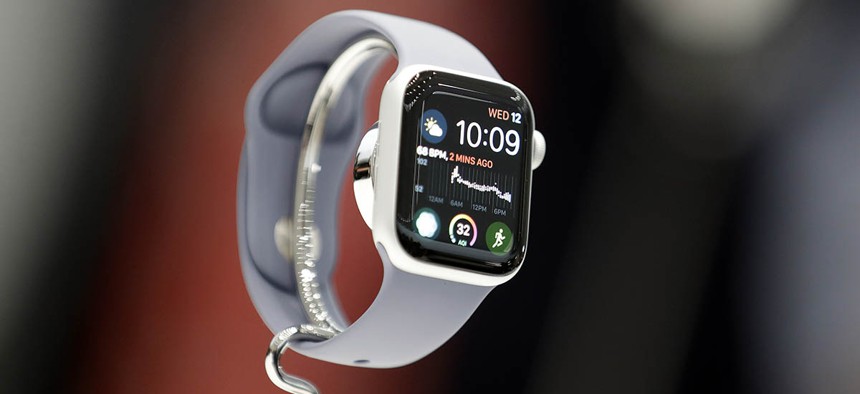The New Apple Watch Is Going to Have More of Your Health Data Than Your Doctor

The new Apple Watch 4 is on display at the Steve Jobs Theater during an event to announce new products Wednesday, Sept. 12, 2018, in Cupertino, Calif. Marcio Jose Sanchez/AP
Owners of the watch can get hospital-grade heart monitoring in 30 seconds.
Apple announced the latest iteration of the Apple Watch, the Series 4, Wednesday Sept. 12 at an event at its headquarters in Cupertino, Calif.
The biggest change to the wearable isn’t the bigger screen or thinner design, but the addition of an FDA-approved electrocardiogram (ECG) that’s built into the device. This means owners of the watch can get hospital-grade heart monitoring in 30 seconds, with the ability to track that heart health over time and export the data as a PDF to share with their doctor.
With this new feature, as well as upgrades to algorithms that analyze other aspects of a person’s health like whether they’ve fallen, Apple is furthering its positioning of the Watch as a healthcare device. It’s a huge shift that allows Apple to turn some of the $500 billion enterprise medical device industry into consumer dollars.
It also fundamentally changes the dynamic between a doctor and patient. With such granular data about a watch owner’s heart health available, in addition to activity and exercise data, exporting health data is going to give a doctor far more information about a person’s daily health. Having all that data on the device also gives Apple the ability to act as an interim doctor in the future if it goes in that direction—it could suggest that you should go to the doctor if your ECG is troubling, or simply continue its quest to prod you to do some more exercise.
Apple’s ability to identify different kinds of falls by using the accelerometer and gyroscope in the device also suggests that, with enough data, it could begin to identify other health-related motions. What if the Apple Watch could detect when its wearer is smoking a cigarette, and tell them to stop?
The Apple Watch will be available to pre-order on Friday, and will start at $399.
NEXT STORY: Will Electric Co-ops Close the Digital Divide?





